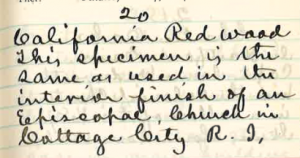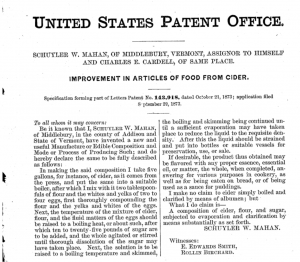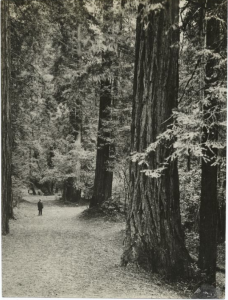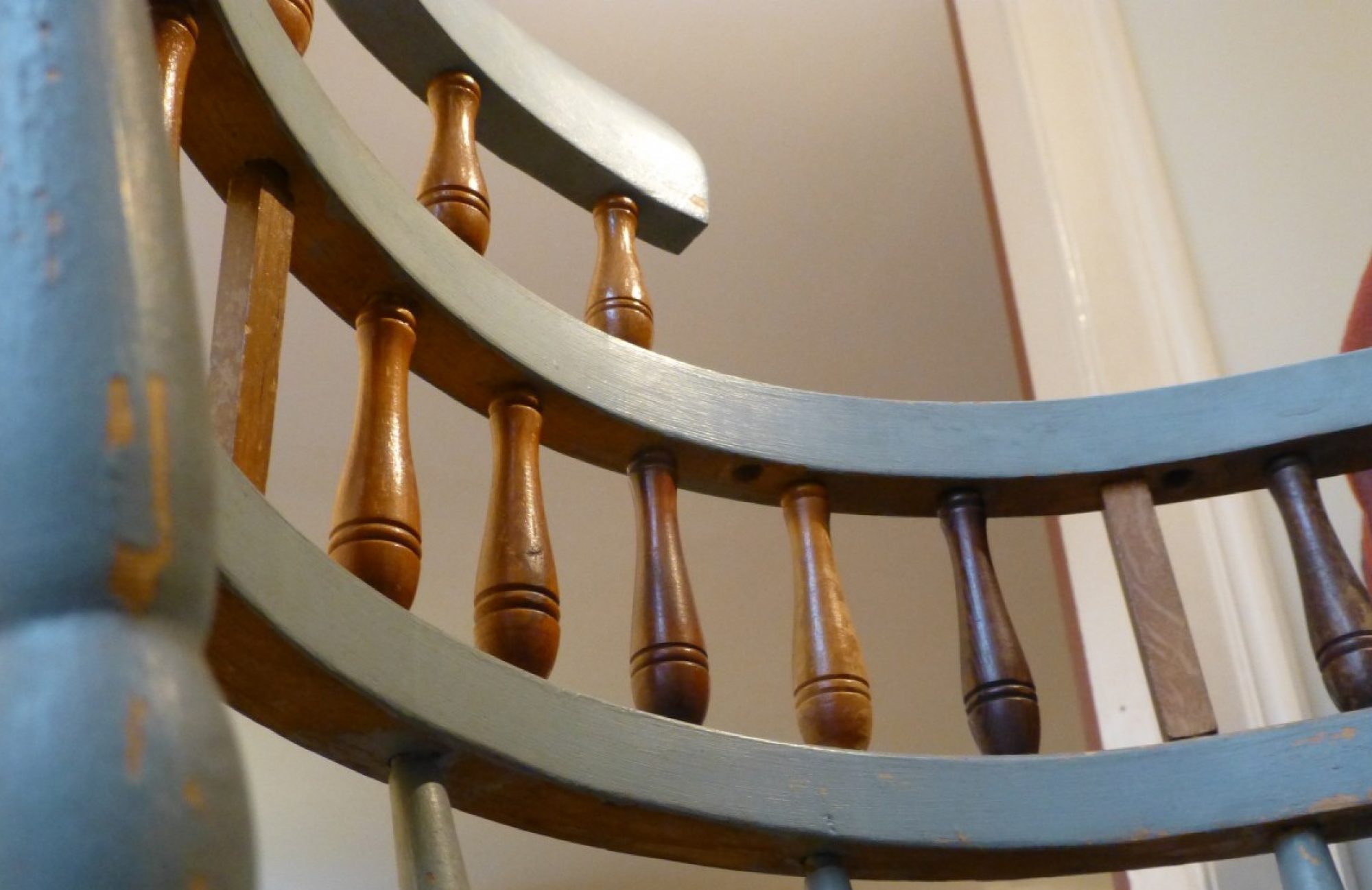On the far right side of the Henry Sheldon chair, above the middle crest, sits the California Redwood spindle. The California redwood spindle was donated to Henry Sheldon by Rollin Birchard, a distinguished Middlebury resident, who obtained the spindle from the interior of an Episcopal church in Cottage City, Rhode Island.[1]


Birchard donated several specimens to the Sheldon Museum and was also cited in multiple newspaper articles. Besides the spindle, on July 1st, 1884, Birchard donated a facsimile of the first manuscript of the Declaration of Independence.[2] This relates directly to the themes of patriotic values expressed through Birchard’s donations and contributions to the Middlebury community. Birchard donated a relic from a prominent North American landmark and also contributed a copy of one of the most patriotic and distinguished pieces of American history.

One specific example of his involvement in the Middlebury community is seen in a patent from the United States Patent Office related to the improvement in articles of food from cider, pictured to the right.[3] Birchard was a witness for the patent application and signed off on Schuyler Mahan’s account. It appears that Birchard was involved in all aspects concerning the town of Middlebury and most definitely had the area’s best interests in mind. He has a collection of papers in the Sheldon Museum archives which contain subject fields ranging from business and entrepreneurship all the way to the pharmaceutical industry.[4] Birchard owned a local drugstore and was a well-known man in the community, so it is somewhat surprising to note that his donation comes from a California Redwood tree. Birchard must have been thinking nationally instead of locally like most of the other spindles on the chair when deciding on what to donate to Sheldon.
The California Redwood is an extremely awe-inspiring natural beauty and the tallest living tree on earth. California Redwoods can live for over a thousand years and can grow upwards of  300 feet, as illustrated by the massive trees in the Redwood forest pictured to the right.[5] Californians take great pride in the California Redwood, which also stands as a pinnacle of American natural beauty. In a book titled Saving California’s Redwoods, a native Californian stated “to us early Californians Redwood has meant a great deal economically and industrially. We have always looked upon our supply as practically inexhaustible, and it is with a start that we have recently realized that the end of this supply is measurably in sight”.[6] Birchard may have had these exact same ideals in mind when selecting a piece to donate to the Sheldon chair. A vast region of American history was slowly being carved away, and Birchard wanted a way to preserve this natural beauty. It is a piece of American identity that has been saved for over a hundred years of a tree that may have been over a thousand years old.
300 feet, as illustrated by the massive trees in the Redwood forest pictured to the right.[5] Californians take great pride in the California Redwood, which also stands as a pinnacle of American natural beauty. In a book titled Saving California’s Redwoods, a native Californian stated “to us early Californians Redwood has meant a great deal economically and industrially. We have always looked upon our supply as practically inexhaustible, and it is with a start that we have recently realized that the end of this supply is measurably in sight”.[6] Birchard may have had these exact same ideals in mind when selecting a piece to donate to the Sheldon chair. A vast region of American history was slowly being carved away, and Birchard wanted a way to preserve this natural beauty. It is a piece of American identity that has been saved for over a hundred years of a tree that may have been over a thousand years old.

The meaning of this spindle has changed slightly as time has progressed, but still holds its great importance as a true piece of American history. The forest has been tainted by human interference such as the construction of roads and logging practices, as seen in the image on the left. The California Redwood forest was celebrated back in 1884 just as it is respected and adored today. One thing that has plagued this natural beauty has been forest fires and disease. Scott Stephens and Danny Fry’s article titled “Fire History in Coast Redwood Stands in the Northeastern Santa Cruz Mountains, California” details the devastating effects of forest fires for the California area, but more specifically its effect on destroying hundreds of acres of trees.[7] This vulnerability of the Redwood Forest places greater significance on relics such as the Redwood spindle. As time progresses and forest fires continue to occur, the abundance of trees will diminish, giving greater value to these pieces of natural history restored for other functions.
The California redwood spindle also points to an important piece of American identity: tourism. The California Redwood Forest brings in thousands of visitors each year and this site has often become a popular spot for photographs. It is a quintessential destination for families taking road trips across the country and visiting the famed Redwood forest. A piece of this forest has now been transported and reshaped into a spindle found in Middlebury, Vermont. The Sheldon chair is able to contain an actual piece of a national forest while alluding to broader patriotic themes. The spindle does not simply just represent a piece of a national forest, but represents the values of American identity.
-Luke Peterson ’19
Footnotes:
1. Henry Sheldon’s Acquisition Ledger for the Sheldon Museum, Sheldon Archives, Collection of Henry Sheldon Museum of Vermont History, Middlebury, Vermont.
2. Acquisition ledger of the Sheldon Museum, Sheldon Archives, Collection of Henry Sheldon Museum of Vermont History, Middlebury, Vermont.
3. Schuyler Mahan, “Improvement in articles of food from cider,” 21 Oct. 1873. U.S. Patent No. 143,918.
4. Collection of Rollin Birchard papers in Sheldon Archives, Sheldon Archives, Collection of Henry Sheldon Museum of Vermont History, Middlebury, Vermont. Accessed January 17, 2018.
5. “California Redwood”, The Miriam and Ira D. Wallach Division of Art, Prints and Photographs: Photography Collection, The New York Public Library. New York Public Library Digital Collections, Accessed January 25, 2018.
6. J.D. Grady, Saving California’s Redwoods (Berkeley: University of California/Save the Redwoods League, 1922), 5.
7. Scott L. Stephens and Danny L. Fry. “Fire history in coast redwood stands in the northeastern Santa Cruz Mountains, California.” Fire Ecology 1, no. 1 (2005), 5-6.
